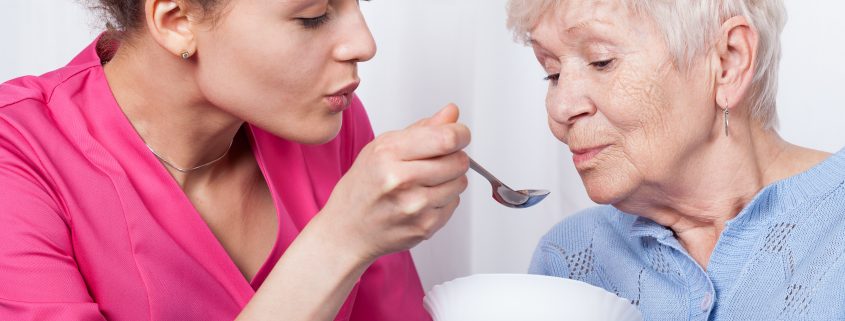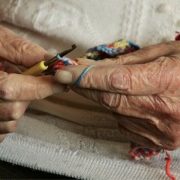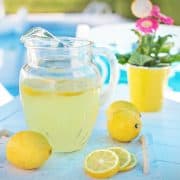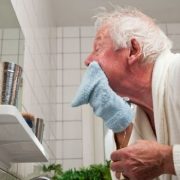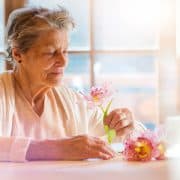Malnutrition, dehydration, and pressure sores – a real threat in care homes
When placing our elderly relatives or close ones into a care home, we assume that they will be properly cared for. Unfortunately, according to the new figures, over 1000 care homes residents have died from malnutrition, dehydration or bedsores in the past five years. In the last report regarding the matter, the National Office for Statistics shows that 1,463 residents of NHS, local authority and private care homes have died in relation to one of these conditions, as either malnutrition, dehydration or bedsores had been mentioned on their death certificates.
It has been reported that between 2013 and 2017, there were 398 cases of dehydration, 226 cases of malnutrition, and 839 cases of pressure sores. Women are affected by these conditions almost twice as much as men. Dehydration, malnutrition, and pressure ulcers were immediate causes of 1,005 deaths in females and 458 deaths in males.
This seems to be a nagging problem and something that is worth looking into when we want to choose the best care option possible for our elderly loved ones. From that perspective care homes may not be perfect.
Malnutrition
Malnutrition is a state in which the deficiency of nutrients such as energy, protein, vitamins, and minerals causes measurable adverse effects on body composition, function or clinical outcome. It results from a poor diet or lack of food but it is often said that it is both a cause and a consequence of ill health.
Malnutrition is a common problem among elderly people in any type of care home (nursing home, care home, and residential home). It is very often unrecognised and untreated or under-treated in the UK.
Symptoms of malnutrition
There are some visible signs of malnutrition that may sometimes be overlooked:
- loss of appetite, no or very little interest in food or drink
- tiredness
- irritability
- feeling cold
- loss of fat, muscle mass, and body tissue
- higher risk of getting sick and taking longer to heal
- longer healing time for wounds
Why elderly people get malnourished in care homes?
There are cases, where there is not enough staff to feed the residents, but this kind of situation is rather unacceptable. Very often food is put in front of the elderly patients, but they simply don’t eat enough, don’t even eat at all, or the food is not properly digested. This may be caused by many different reasons, but it is fair to say that it is the carer’s duty to notice the problem in the first place. Patients in old age suffer from a number of conditions and it may impair the ability to eat. Poor eyesight, reduction of senses of smell and taste, constipation, oral health issues – it all may affect a person’s willingness or ability to eat. Also, some medications may affect a person’s eating habits, as they may reduce the appetite or may affect the digestive system (causing nausea, vomiting or diarrhoea). All that should be immediately noticed by the staff and acted upon.
Dehydration
A situation where the body lacks the right amount of water and nutrients necessary for its proper functioning is considered a dehydration. It can be very dangerous and life-threatening when neglected.
Dehydration in care homes – the symptoms that are often neglected and general reasons for dehydration
There are some warning signs that may precede dehydration, that should be acted upon immediately. These may include:
- dry, chapped lips
- increased thirst
- dry pale skin
- dizziness, headaches
- mouth ulcers
- blurred vision
- sporadic urination
- constipation
- constant changes in the perceived body temperature
- fainting
- decreased blood pressure
Further effects are much more serious – a constant lack of fluid intake, even at a small level, increases the risk of kidney disease or coronary heart disease.
The most common reasons for dehydration are:
- intensive sweating (e.g. caused by fever or elevated temperature of ambient)
- nausea, vomiting
- diarrhoea
- insufficient fluid intake
- urinary tract infections and use of diuretics
- diabetes
What causes dehydration in care homes?
The risk of dehydration in older people is simply higher than in younger adults, especially in the summer. With age, the mechanism of feeling thirsty is simply weakening – many seniors do not even realise that their body needs a greater supply of fluids than they supply it throughout the day. Since they don’t know they need to supply themselves with fluids, they don’t communicate it and get easily get dehydrated. Moreover, it happens a lot that elderly people simply do not like to drink. The problem may even be more serious in patients having dementia.
It is crucial that care home personnel is very observant and makes sure that the elderly care home patient drink at least 2 litres of liquid during the day (or more in case of fever, diarrhoea or urinary tract infection).
Pressure sores
Pressure sores (pressure ulcers, bedsores) are injuries to the skin or underlying tissue, that appear when the skin is being pressured for too long. Elderly people confined to the bed or who sit in a wheelchair for a long period of time are at a very high risk of developing bedsores. Pressure sores can cause significant pain and distress for patients and can contribute to longer stays in the hospital, increasing the risk of complications and infections. It has been proven that pressure ulcers cause hundreds of deaths every year.
The reasons for developing pressure sores and the ways to prevent it
The direct reasons for developing pressure sores are pressure, shear, and friction. Other factors are related to lack or limited mobility that may be caused by paralysis, sedation, poor health, any injury that requires prolonged use of the bed or wheelchair, surgical recovery, coma.
Pressure sores are also related to improper nutrition or hydration, or lack of attentiveness. Care homes have the responsibility to ensure pressure sores do not develop in patients who cannot move or are confined to a bed or to a wheelchair.
Preventing pressure sores – SSKIN method
To recognise pressure ulcers and to prevent them, the SSKIN method has been developed.
SSKIN is an acronym of 5 words, that make up five steps to have pressure sores under control:
- Surface: make sure your patient has comfortable, soft and gentle support
- Skin inspection: full daily skin inspection means early detection – check patient’s skin condition regularly.
- Keep moving: Encourage movement, change position every 2 hours. Encourage independent movement.
- Incontinence/moisture: make sure that the patient’s skin is clean, dry and moisturised.
- Nutrition/hydration: help patient have the right diet and plenty of fluids. Healthy diet speeds up the healing process
Conclusion
Malnutrition, dehydration, and bedsores or any other failure of care home staff to exercise proper care are considered negligence. The staff needs to pay careful attention to the environment of the facility and take steps to resolve any health or sanitary concerns. Failure to provide an elderly person the necessary care in the care home can be a very dangerous situation, regardless of whether it’s intentional or not. Patients in a serious health condition are unable to care for themselves. Care home staff members are there to serve the residents and provide the best care possible. If there are any evident signs of possible abuse or neglect, the situation needs to be exposed and resolved, so that the elderly person doesn’t suffer unnecessarily.

